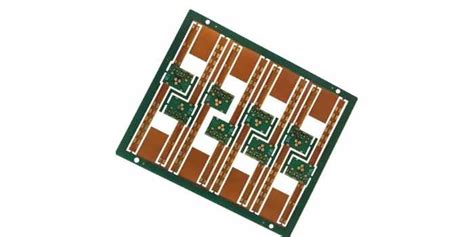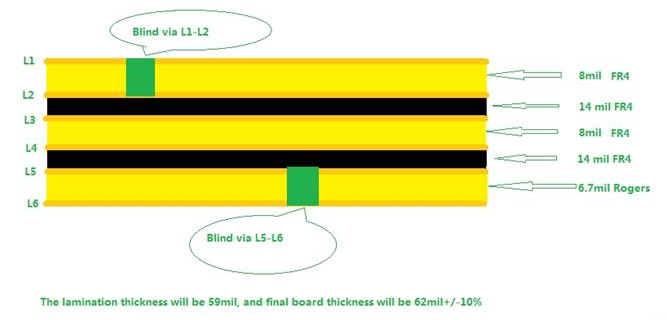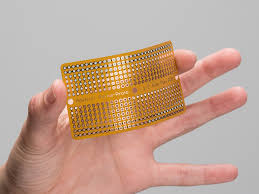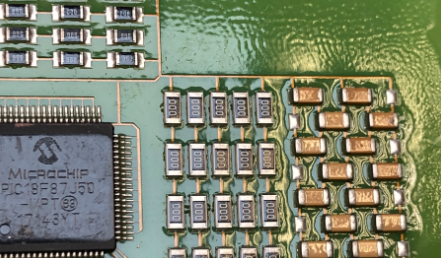The Importance of Copper Thickness in Printed Circuit Boards (PCBs)
Introduction
Printed Circuit Boards (PCBs) are the backbone of modern electronics, providing the necessary platform for electrical connections between components. One of the most critical aspects of PCB design and manufacturing is the copper thickness, which plays a significant role in determining the board’s electrical performance, thermal management, and mechanical durability. This article delves into the importance of copper thickness in PCBs, exploring its impact on various aspects of PCB functionality, the factors influencing its selection, and the challenges associated with different copper thicknesses.
1. Understanding Copper Thickness in PCBs
Copper is the primary conductive material used in PCBs, forming the traces, pads, and planes that facilitate electrical connectivity. The thickness of the copper layer is typically measured in ounces (oz), where 1 oz of copper corresponds to a thickness of approximately 1.4 mils (35 microns). Common copper thicknesses used in PCBs range from 0.5 oz to 3 oz, with 1 oz being the most widely used.
The copper thickness is determined during the PCB manufacturing process, where a thin layer of copper is laminated onto the substrate material (usually FR-4). The desired thickness is achieved through a combination of electroplating and etching processes. The choice of copper thickness is influenced by several factors, including the electrical requirements, thermal management needs, and mechanical constraints of the PCB.
2. Electrical Performance and Copper Thickness
The electrical performance of a PCB is directly affected by the copper thickness. Thicker copper layers offer lower electrical resistance, which is crucial for high-current applications. The resistance of a copper trace is inversely proportional to its cross-sectional area; therefore, increasing the copper thickness reduces the resistance, minimizing power loss and heat generation.
For high-frequency applications, the skin effect becomes a significant consideration. The skin effect refers to the tendency of alternating current (AC) to flow near the surface of a conductor, reducing the effective cross-sectional area and increasing resistance. Thicker copper layers can mitigate the skin effect by providing a larger surface area for current flow, thereby improving signal integrity and reducing losses.
However, thicker copper layers also increase the capacitance between adjacent traces, which can lead to signal crosstalk and impedance mismatches. Therefore, the choice of copper thickness must strike a balance between reducing resistance and maintaining signal integrity, especially in high-speed digital and RF circuits.

3. Thermal Management and Copper Thickness
Thermal management is a critical aspect of PCB design, particularly in power electronics and high-density circuits. Copper is an excellent conductor of heat, and thicker copper layers enhance the PCB’s ability to dissipate heat generated by components. This is especially important in high-power applications, where excessive heat can lead to component failure and reduced reliability.
Thicker copper layers provide a larger thermal mass, allowing the PCB to absorb and distribute heat more effectively. This reduces the temperature rise in critical areas, improving the overall thermal performance of the board. Additionally, thicker copper layers can be used to create thermal vias and heat sinks, further enhancing heat dissipation.
However, the increased thermal conductivity of thicker copper layers can also pose challenges. In multi-layer PCBs, the thermal expansion of copper can lead to mechanical stress, especially when combined with materials that have different coefficients of thermal expansion (CTE). This can result in warping, delamination, or even cracking of the PCB. Therefore, the thermal properties of the substrate material must be carefully considered when selecting the copper thickness.
4. Mechanical Durability and Copper Thickness
The mechanical durability of a PCB is influenced by the copper thickness, particularly in terms of the board’s ability to withstand mechanical stress, vibration, and thermal cycling. Thicker copper layers provide greater mechanical strength, reducing the risk of trace breakage and improving the overall robustness of the PCB.
In applications where the PCB is subjected to harsh environmental conditions, such as automotive or aerospace electronics, thicker copper layers can enhance the board’s resistance to mechanical shock and vibration. Additionally, thicker copper layers can improve the solder joint reliability, as they provide a more substantial base for component attachment.
However, thicker copper layers also increase the overall weight and thickness of the PCB, which can be a concern in weight-sensitive applications. Furthermore, the increased thickness can make the PCB more challenging to route, especially in high-density designs where space is at a premium. Therefore, the mechanical requirements of the application must be carefully balanced against the need for thicker copper layers.

5. Factors Influencing Copper Thickness Selection
The selection of copper thickness in PCB design is influenced by several factors, including:
- Current Carrying Capacity: The amount of current that needs to be carried by the traces determines the required copper thickness. Higher currents necessitate thicker copper layers to minimize resistance and heat generation.
- Signal Integrity: For high-speed and high-frequency circuits, the copper thickness must be chosen to minimize signal loss, crosstalk, and impedance mismatches. Thicker copper layers can help reduce the skin effect, but they may also increase capacitance, affecting signal integrity.
- Thermal Management: The thermal requirements of the PCB, including the need for heat dissipation and thermal stability, influence the choice of copper thickness. Thicker copper layers enhance thermal conductivity but may also increase mechanical stress.
- Mechanical Durability: The mechanical environment in which the PCB will operate, including factors such as vibration, shock, and thermal cycling, affects the required copper thickness. Thicker copper layers provide greater mechanical strength but may increase the weight and thickness of the board.
- Manufacturing Constraints: The capabilities of the PCB manufacturing process, including the ability to achieve the desired copper thickness and the associated cost, also play a role in the selection process. Thicker copper layers may require specialized manufacturing techniques and can increase the overall cost of the PCB.
6. Challenges Associated with Different Copper Thicknesses
While thicker copper layers offer several advantages, they also present challenges that must be addressed during the design and manufacturing process:
- Etching and Plating: Thicker copper layers require more aggressive etching and plating processes, which can increase the complexity and cost of manufacturing. Additionally, achieving uniform copper thickness across the entire board can be challenging, particularly in high-density designs.
- Impedance Control: Maintaining consistent impedance in high-speed circuits becomes more difficult with thicker copper layers, as the increased capacitance can lead to impedance mismatches. Careful design and simulation are required to ensure signal integrity.
- Thermal Expansion: The thermal expansion of thicker copper layers can lead to mechanical stress, particularly in multi-layer PCBs. This can result in warping, delamination, or cracking, especially when combined with materials that have different CTEs.
- Weight and Thickness: Thicker copper layers increase the overall weight and thickness of the PCB, which can be a concern in weight-sensitive applications. Additionally, the increased thickness can make the PCB more challenging to route, particularly in high-density designs.
7. Conclusion
Copper thickness is a critical parameter in PCB design and manufacturing, influencing the board’s electrical performance, thermal management, and mechanical durability. The selection of copper thickness must be carefully balanced against the specific requirements of the application, taking into account factors such as current carrying capacity, signal integrity, thermal management, and mechanical durability.
While thicker copper layers offer several advantages, including reduced resistance, improved thermal conductivity, and enhanced mechanical strength, they also present challenges that must be addressed during the design and manufacturing process. Careful consideration of these factors is essential to ensure the optimal performance and reliability of the PCB.
In conclusion, the choice of copper thickness is a complex decision that requires a thorough understanding of the application requirements, the capabilities of the manufacturing process, and the potential trade-offs involved. By carefully evaluating these factors, designers can select the appropriate copper thickness to meet the specific needs of their PCB, ensuring optimal performance and reliability in the final product.







